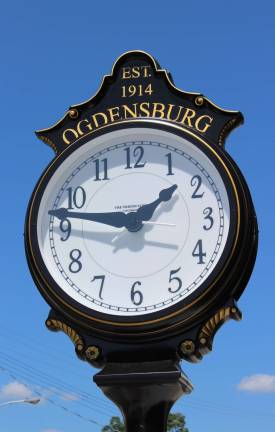Spring Forward 2017

What you need to know about Spring Forward 2017:Before you go to sleep at night on March 11, set your clocks one hour ahead.
This means Americans will lose an hour of sleep that night.
It will likely be darker outside when you get up, but the sun may still be out when you start heading for home after work on Monday.
As winter gives way to spring, the sun will begin to stay out longer, eventually turning into summer nights.
Benjamin FranklinYou may remember from the Nicholas Cage movie "National Treasure" that American inventor and politician Benjamin Franklin wrote an essay called “An Economical Project for Diminishing the Cost of Light” to the editor of The Journal of Paris in 1784. In the essay, he suggested, although jokingly, that Parisians could economize candle usage by getting people out of bed earlier in the morning, making use of the natural morning light instead.
Source: Timeanddate.com
DST begins in AmericaIn the U.S., Daylight Saving Time, or “Fast Time” as it was called then, was first introduced in 1918 when President Woodrow Wilson signed it into law to support the war effort during World War I. The initiative was sparked by Robert Garland, a Pittsburgh industrialist who had encountered the idea in the UK. Today he is often called the “Father of Daylight Saving.”
But just seven months later, the seasonal time change was repealed, but some cities, including Pittsburgh, Boston, and New York, continued to use it until President Franklin D. Roosevelt instituted year-round DST in the United States in 1942 called “War Time.” That lasted until 1944, and from 1945 to 1966, there was no federal law on DST, with states able to use it if they wanted. By 1962, the transportation industry found the lack of consistency confusing enough to push for federal regulation, the result being the Uniform Time Act of 1966, though certain states like Arizona and Michigan exempted themselves. In 1986 Congress extended DST by changing the beginning to the first Sunday in April and having the end remain the last Sunday in October. And then in 2007, DST was again extended into November with the idea to allow children to go trick-or-treating in more daylight. Some states still do not use DST.
Source: Timeanddate.com
Which states use DST?Two U.S. states that do not use Daylight Saving Time: Arizona and Hawaii
Arizona has chosen to not use DST to try and conserve energy that would have been used during the extra hour of sunlight by cooling systems in two of the county’s hottest cities, Phoenix and Tucson.
The entire state of Indiana began using DST in 2006.
All the U.S. territories (American Samoa, Guam, Northern Mariana Islands, Puerto Rico, and the Virgin Islands) do not observe DST.
The Navajo Indian Reservation, which extends into Utah and New Mexico, and the Hopi Reservation in Arizona, do not observe DST.
Nevada lawmakers may decide to use DST throughout the entire year.
Lawmakers also are looking to end DST in Washington due to inconvenience, health problems and accidents due to lost sleep they say the time switches cause.
Does DST save energy?Many studies have been done to determine if Daylight Saving Time actually saves energy.
In 1975, the Department of Transportation, evaluated a plan of extending DST into March and reported that “modest overall benefits might be realized by a shift from the historic six-month DST (May through October) in areas of energy conservation, overall traffic safety and reduced violent crime.” However, Congress then asked the National Bureau of Standards to evaluate the DOT report and found no significant energy Saving or differences in traffic fatalities.
An October 2008 study conducted by the University of California at Santa Barbara for the National Bureau of Economic Research found that the 2006 DST adoption in Indiana actually increased energy consumption in Indiana by an average of 1 percent. Although energy consumption for lighting dropped as a result of the DST adoption, consumption for heating and cooling increased by 2 to 4 percent.
Today, the state of Arizona has chosen to not use DST to try and conserve energy that would have been used during the extra hour of sunlight by cooling systems in two of the county’s hottest cities, Phoenix and Tucson.
Sources: Timeanddate.com, energy studies
DST around the worldDST in Canada: In July 1908, Port Arthur, present day Thunder Bay in Ontario, Canada, became the first location to use DST. Other locations in Canada were also early to introduce Daylight Saving bylaws. Then in April 23, 1914, Regina in Saskatchewan, Canada implemented DST. The cities of Winnipeg and Brandon in Manitoba followed on April 24, 1916. According to the April 3, 1916, edition of the Manitoba Free Press, Daylight Saving Time in Regina “proved so popular that bylaw now brings it into effect automatically.”
DST in Europe: During World War I, in an effort to conserve fuel, Germany became the first country to introduce Daylight Saving Time when clocks were turned ahead 1 hour on April 30, 1916. The goal was to conserve fuel needed for the war effort during World War I.
The idea was quickly followed by the United Kingdom and several other countries, including France. But after World War I ended, many countries reverted back to standard time. It wasn’t until the next World War that DST made its return in most of Europe.
Source: Timeanddate.com